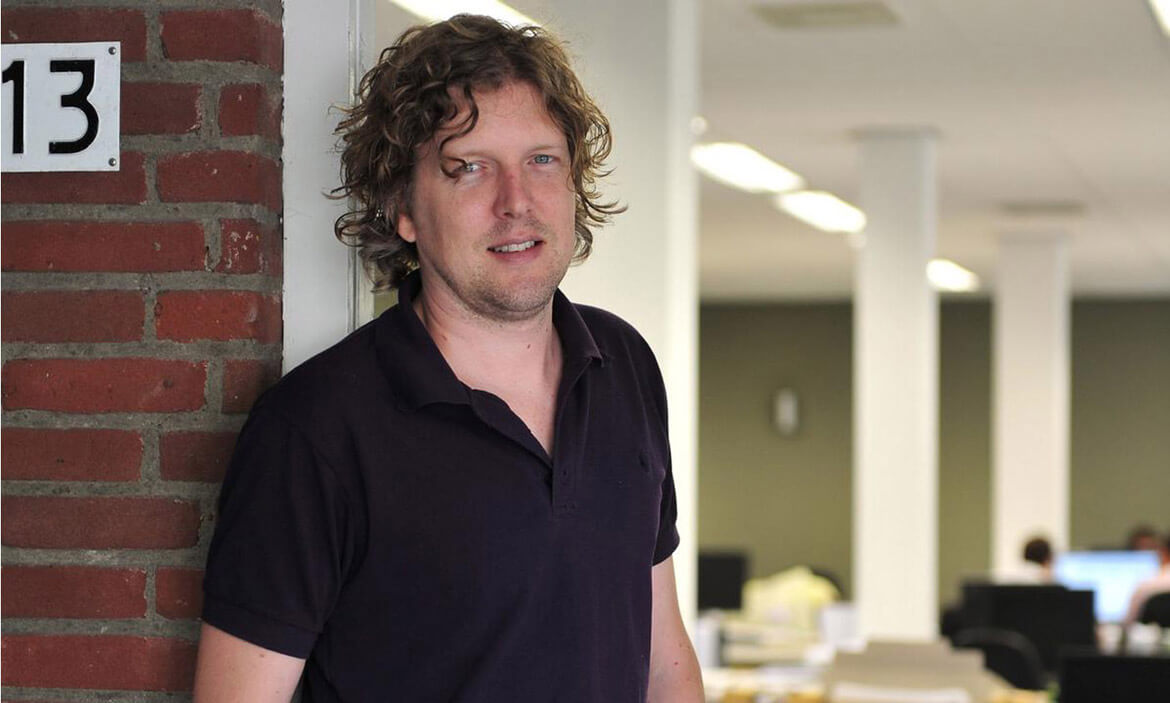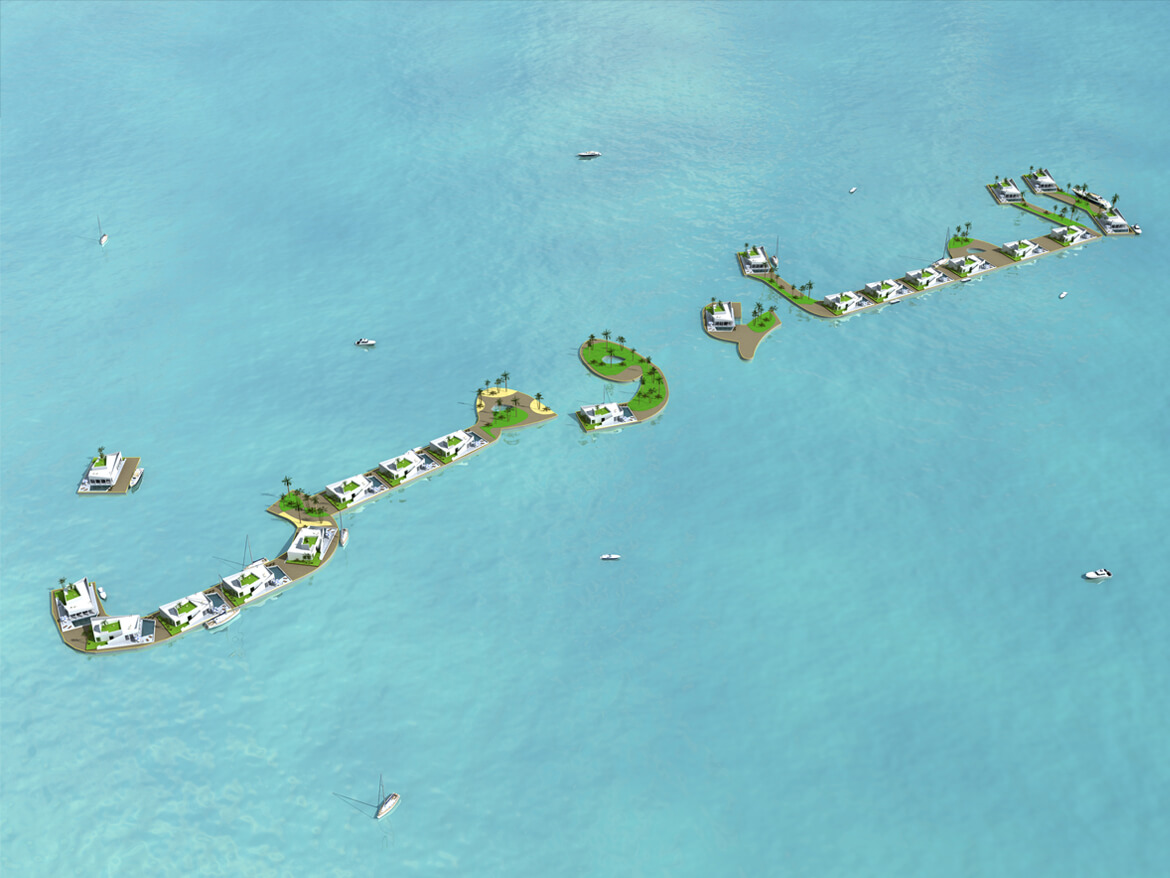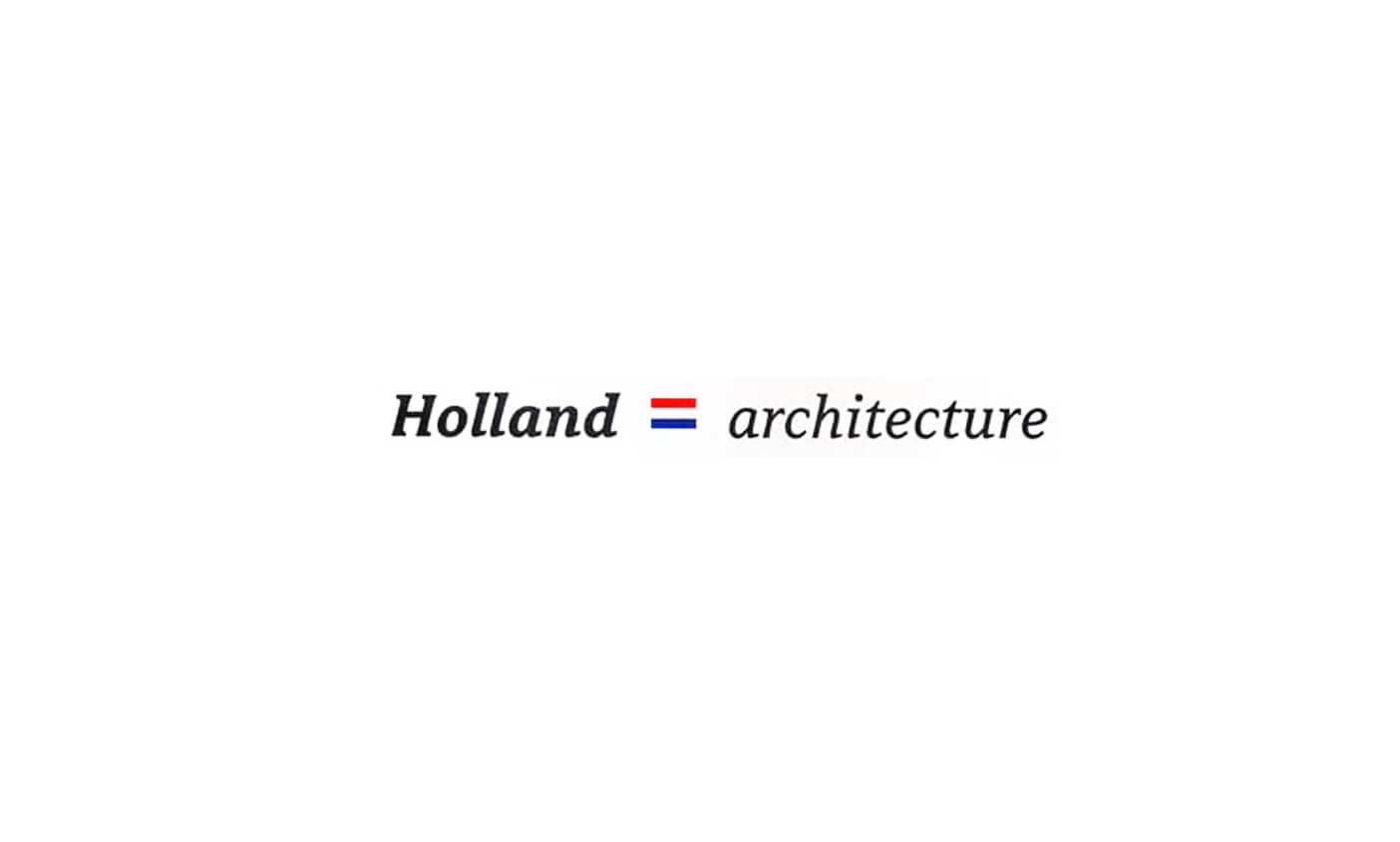Het ontwerp voor het complex in Woubrugge bestaat uit twee groepen van drie gebouwen, elk rond een centrale binnenplaats. Elk gebouw bevat twee tot vier woningen. Het complex zou moeten komen op een locatie aan het water van de Heijmanswetering.
Volgens Olthuis, van Architectenbureau Waterstudio.nl, kan het complex worden gerealiseerd op ‘drijvende bouwgrond’ of op de gebruikelijke palen. “Wij gaan voor de drijvende uitvoering”, zegt Olthuis: “Dat geeft een directer contact met het water. De woning op palen zetten betekent een wat hoger aanlegniveau.”
Het complex op drijvende bouwgrond zetten betekent in dit geval op een betonnen bak met een waterdoorsnijdend oppervlak van 50 bij 50 meter. Gezien de belastingen kan het nodig zijn voorzieningen te treffen om ervoor te zorgen dat mensen niet zeeziek worden. Bepalend daarvoor zijn versnellingen en hoekversnellingen. Om die af te zwakken kan het nodig zijn dempers aan te brengen. In Woubrugge zal dat naar verwachting niet nodig zijn, omdat bijvoorbeeld de golfslag die kan worden verwacht, die voorziening niet rechtvaardigt.
Uitdaging
Voor een project voor waterwoningen in open water bij Dubai zijn de ‘anti-zeeziekdempers’ wel essentieel, licht Olthuis toe. Bij de ontwikkeling van het concept werkt Waterstudio.nl samen met Dutch Docklands International en Royal Haskoning.
Technisch bezien is het een uitdaging woningen te situeren in open water op ‘drijvende bouwgrond’. In Woubrugge zijn volgens Olthuis echter geen problemen te verwachten. Want er is weinig golfslag. Het is wel zo dat hoe groter de oppervlakte van de drijvende funderingen hoe minder last er is van externe belastingen zoals golfslag, een huis vol waterbedden of een zware vracht voor de deur van een woning. Het complex in Woubrugge is ontworpen voor de VDR-Groep, een bouwbedrijf dat ontwikkelt, bouwt, installeert, beheert en onderhoudt. VBR-Groep is doende met verwerven van grond. Daarvoor wordt nog overlegd met de gemeente en de provincie. Er wordt gesproken over de locatie aan de Heijmanswetering en een alternatief elders. In Woubrugge komt het complex gedeeltelijk in het water te liggen, een klein gedeelte van het land wordt ontgraven. Het complex heeft zijn grootste hoogte aan het water en loopt af naar de weg die langs het water loopt. De woningen aan de kanaalzijde hebben de woonkamer boven de botenhuizen. Op het binnenterrein van het complex is parkeergelegenheid. Vanaf de weg is er door het botenhuis zicht op het water.
Grondwater
Drijvende bouwgrond kan volgens Olthuis ook worden toegepast op locaties die niet aan het water liggen. Dan zou een complex kunnen drijven op het grondwater. Dat zou zinvol kunnen zijn voor woningen op locaties met een slechte grondslag. Bekend is dat wegen en tuinen daar wegzakken. Als het grondwaterpeil wordt aangepast zakt de woning mee. Ophoogwerk kan daarmee worden vermeden.
De technieken die bij het complex met 404 woningen in Dubai worden gebruikt zijn bekend vanuit de offshore. Olthuis laat weten dat geïnteresseerde eigenaars daarvoor weinig interesse tonen. Potentiële bezitters van huizen op het water willen eigenlijk maar drie dingen weten: is het pand verzekerbaar, is het te financieren en gaat het 100 jaar mee.
Olthuis zegt dat wonen op het water niet echt veel anders is dan wonen in Amsterdam. Die stad bestaat eigenlijk ook uit honderden eilandjes met woningen op palen. Met al het water eromheen zie je het verschil met een woning op drijvende bouwgrond eigenlijk helemaal niet. Hij vindt overigens wel dat we in Nederland daar moeilijk tegenaan kijken. Het wonen aan het water heeft hier een negatief imago. De associatie met overstromingen en de daaraan verbonden narigheid ligt voor de hand. In het buitenland is daar geen sprake van, stelt Olthuis vast.











